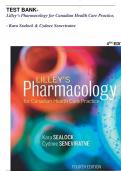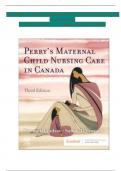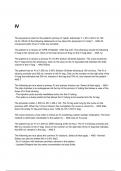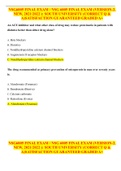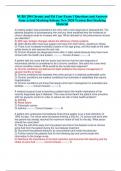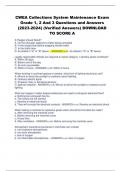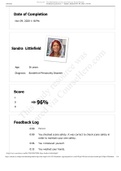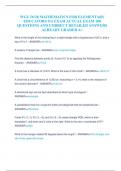Exam (elaborations)
TEST BANK- lOMoARcPSD| Lilley’s Pharmacology for Canadian Health Care Practice, : Kara Sealock & Cydnee Seneviratne 4TH EDITION
TEST BANK- lOMoARcPSD| Lilley’s Pharmacology for Canadian Health Care Practice, : Kara Sealock & Cydnee Seneviratne 4TH EDITION(newest)
[Show more]
